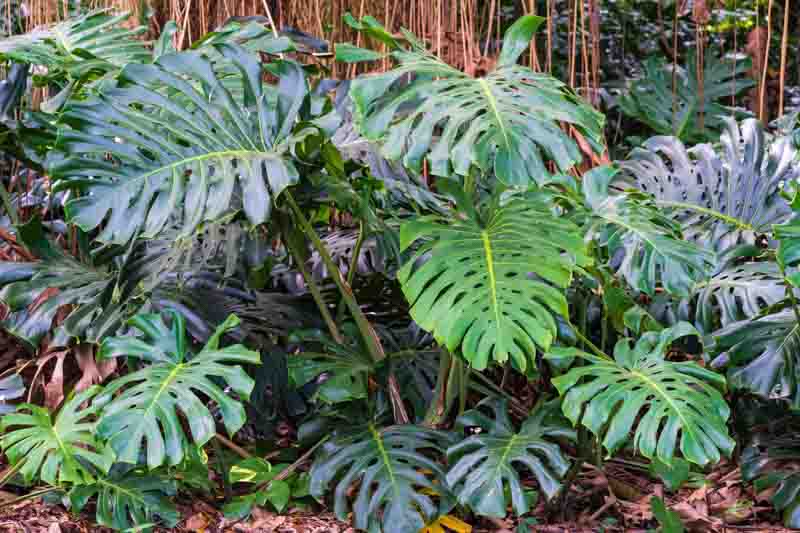Monstera
Monstera, a genus of about 50 species of tropical plants, is renowned for its striking foliage and architectural presence. These plants are native to the tropical regions of the Americas, thriving in the dense, humid rainforests from southern Mexico to Panama. Among the main species, Monstera deliciosa, commonly known as the Swiss cheese plant, and Monstera adansonii, often referred to as the Swiss cheese vine, stand out for their popularity and distinctive appearance.
Growth Habit: Monstera plants exhibit a climbing habit, using aerial roots to anchor themselves to larger structures, whether trees in their natural habitat or support poles and trellises in indoor environments. This growth habit allows them to reach for light in the dense foliage of the rainforest, making them adaptable to various light conditions in home settings.
Hardiness: Their hardiness is predominantly suited to warm, humid climates, thriving in USDA zones 10-12 if planted outdoors. However, most species are commonly grown indoors, protected from cold temperatures, and maintained at appropriate humidity levels.
Uses: The primary use of Monstera plants is ornamental, valued for their lush, dramatic foliage that can transform indoor spaces with a tropical aesthetic. They are often featured in interior design and landscaping projects to add a vibrant, green touch to living spaces, offices, and garden areas.
Benefits: Beyond their decorative appeal, Monsteras offer several benefits. They are known to purify the air, removing toxins such as formaldehyde and benzene, thus contributing to a healthier indoor environment. Additionally, their presence has been linked to reduced stress levels, promoting a sense of well-being and calm in home and office settings.
Monstera plants are toxic to humans, cats, and dogs if ingested. They contain calcium oxalate crystals that can cause mouth and stomach irritation. Contact with their sap may cause skin irritation.

